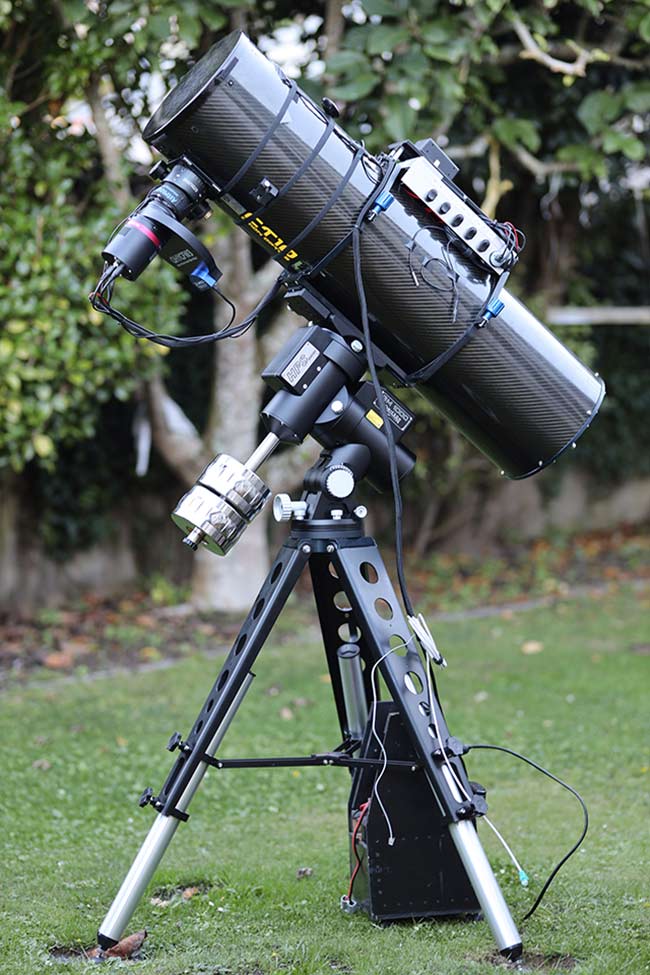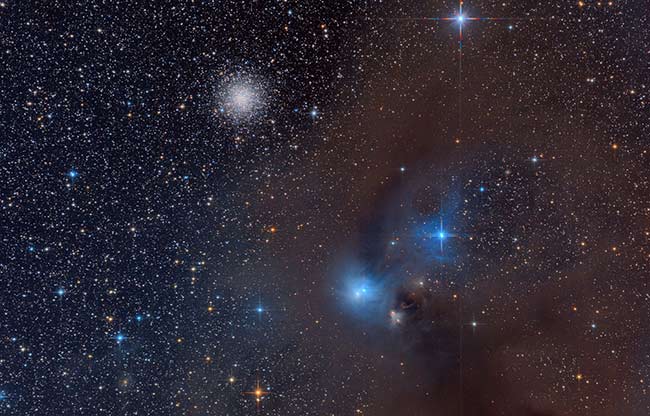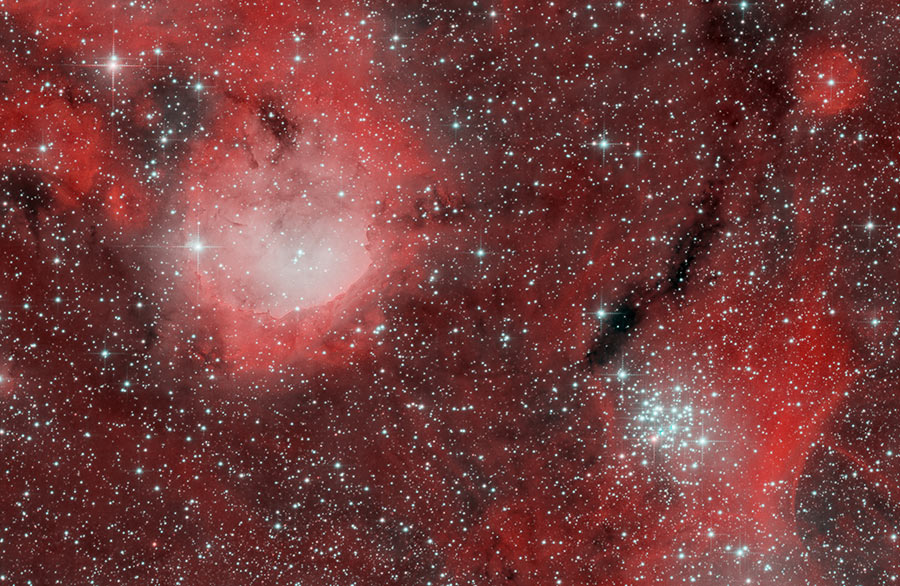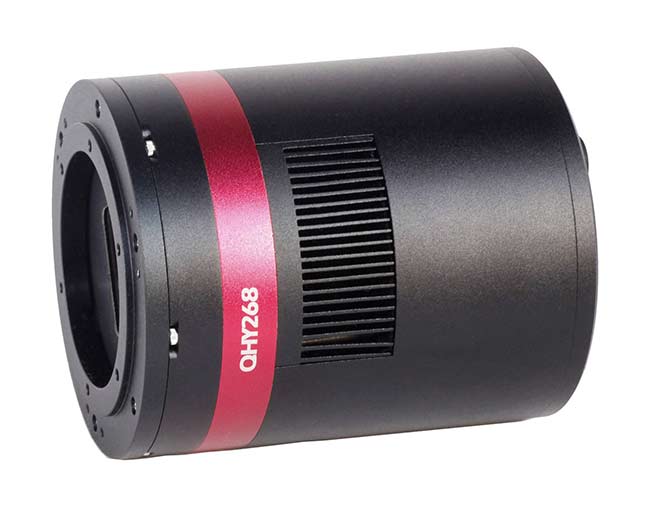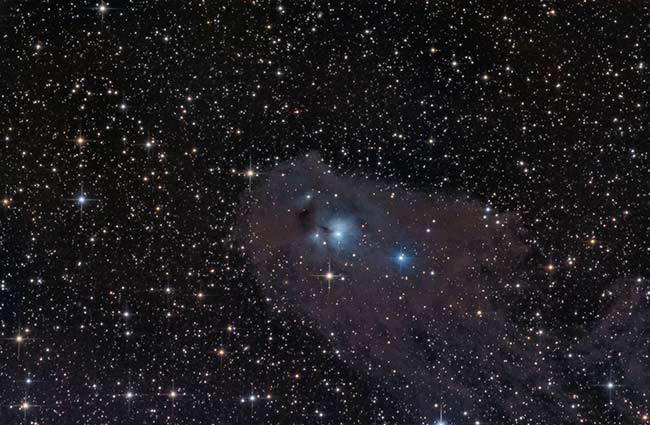Backyard of the Week | November 1, 2021
The AstroBackyard Backyard of the Week highlights astrophotography setups from around the world. A “backyard” can be a balcony, driveway, garden, or wherever else you set up astrophotography equipment at home.
By taking a behind-the-scenes look at the equipment amateur astrophotographers use to take deep-sky images, you can get a better understanding of the process.
This week’s backyard astrophotography equipment profile comes to us from Matt Balkham in New Zealand.
Location: Wellington, New Zealand
Matt Balkham
This might be one of the most impressive backyard astrophotography setups we’ve seen so far. Matt has put together a deep-sky imaging system capable of producing “picture of the day” worthy images like the one below.
NGC6 726 (RGB) by Matt Balkham
A large aperture Newtonian Reflector allows Matt to collect plenty of photons in each exposure. The combination of a monochrome dedicated astronomy camera and a fast reflector are a beautiful thing.
Matt’s telescope records images at a focal length of 1200mm at F/4.8. This provides enough reach to capture smaller nebulae in detail, as well as galaxies. A setup like this under dark, southern hemisphere skies is a match made in heaven.
Matt’s Equipment
| Primary Camera | QHY 268M |
| Primary Telescope | Orion Optics CT10 Reflector |
| Mount | 10 Micron GM1000 HPS Mount |
| Filters | ZWO LRGB Filter Set + Baader Narrowband |
| Guide Scope | None |
| Guide Camera | None |
| Camera Control | Kstars/INDI & Stellarmate |
NGC 3324 HOO BiColour by Matt Balkham
What does Matt love most about his gear?
“Quick (fish!) to set up thanks to everything being onboard and wired. Unguided subs to +10mins.”
The Camera
The QHY268M CMOS camera has received a lot of positive attention this year. This is a 26MP monochrome dedicated astronomy camera with a large APC-C-sized sensor.
A cooled astronomy camera like this is perfect for high-resolution imaging in both LRGB and narrowband. This is the monochrome counterpart of the QHY268C, a camera I had the pleasure of testing in 2021.
QHY268 Mono CMOS Camera
The Filters
Matt uses a ZWO LRGB Filter Set with his monochrome camera to produce full-color (RGB) images with his monochrome camera. For narrowband projects, he uses a set of Baader SHO filters to get the job done.
ZWO Luminance, Red, Green, and Blue 2 inch filter set
The Telescope
The Orion Optics CT10 is one big, bad ‘scope. Orion Optics lists the CT10 as a spectacular lunar and planetary imaging telescope, but Matt has shown us that it is wonderful at capturing detailed photos of nebulae as well.
A focal length of 1200mm is enough to bring medium-sized nebulae up-close, while small galaxies are within reach for a closer look. A blazing fast f-ratio of F/4.8 sweetens the deal.
This is a lot of telescope. It requires an equatorial telescope mount up to the task of tracking the night sky with a 24-lb tube riding on top.
Orion Optics CT10
- Type: Newtonian Reflector
- Diameter: 250mm
- Focal Length: 1200mm
- Focal Ratio: f/4.8
- Weight: 24 lbs (11 kg)
NGC 5367 by Matt Balkham
The Telescope Mount
The 10 Micron GM1000 is a serious astrophotography mount. The movements of the GM1000 are driven by two servo-brushless motors, with timing belt reduction for zero backlash.
“Both axes utilize worm-wheel and worm gear-driven systems in conjunction with the included absolute encoders to provide smooth, stable movement of the mount head when tracking or slewing. The worm wheels are constructed from Bronze, have 250 teeth, and are of a 125 mm diameter.”
10 Micron GM1000
Thank you for sharing your backyard astrophotography set up with us, Matt! You can view his astrophotography on Astrobin.
Be sure to fill out the form to submit your backyard for a chance to be featured, and don’t forget to include your Instagram handle to help grow your following.
View the Backyard of the Week Archives
